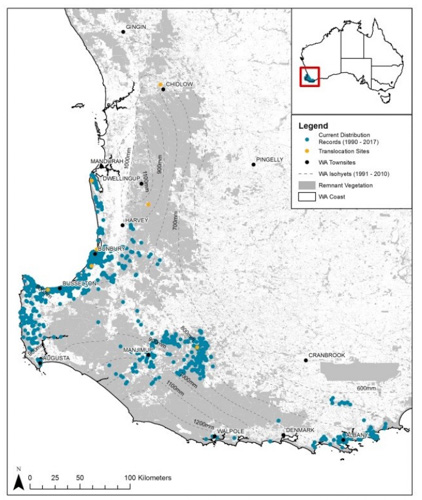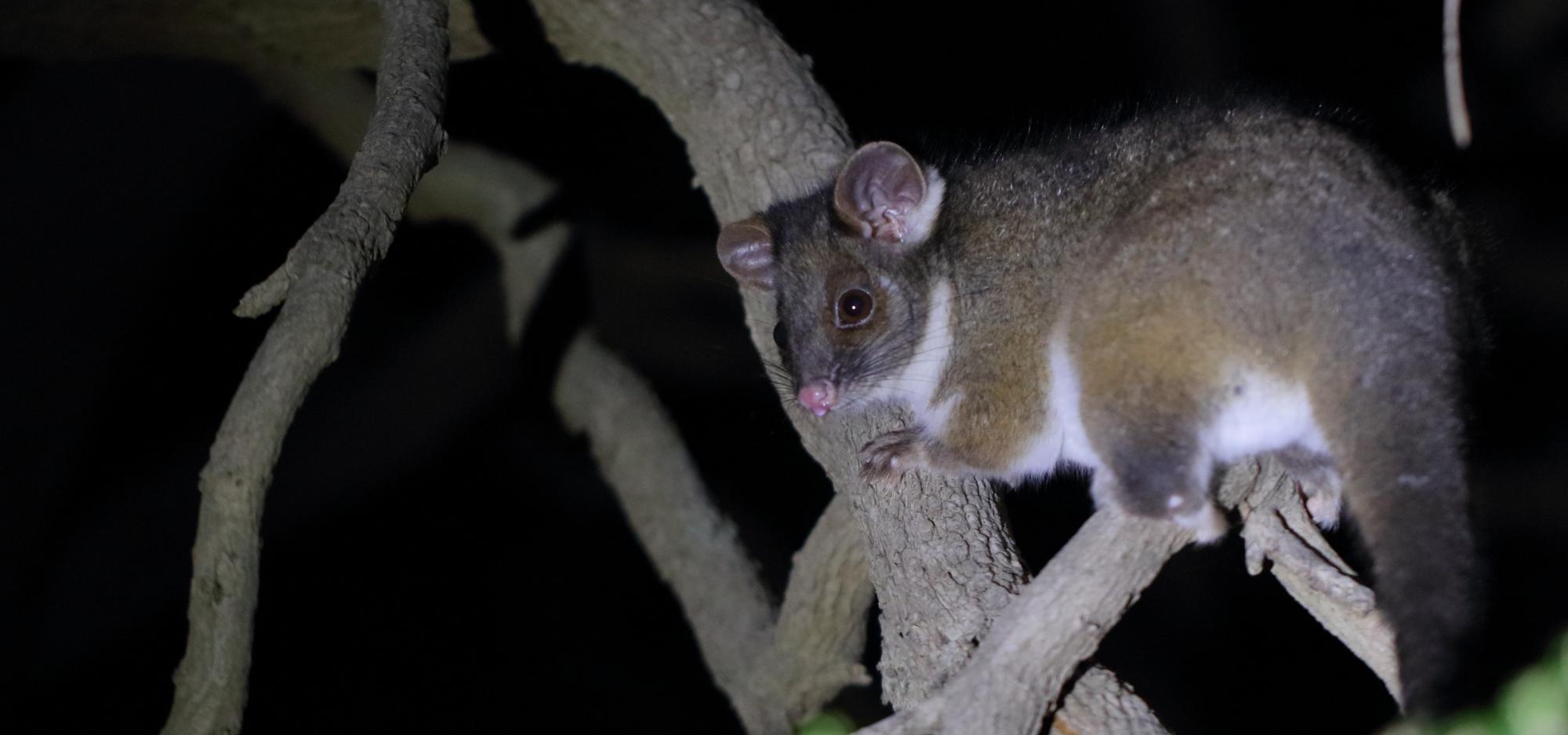Nyoongar Name: Wawding
Scientific Name: Pseudocheirus occidentalis
Common Name: Western Ringtail Possum
Conservation status: Critically Endangered. This means a species has an extremely high chance of dying out or becoming extinct in the future.
Fun facts
- Western Ringtail Possums are only found in the south-west of Western Australia. How lucky are we?
- This possum is shy and rarely seen on the ground unlike the common brushtail possum (Trichosurus vulpecula) which you are much more likely to see.
- Ringtails are arboreal, meaning they spend most of their time in trees, particularly in the canopy of peppermint (Agonis flexuosa) and Eucalyptus trees.
- They are herbivores and eat mainly leaves which they forage for in the canopy (treetops). They are also nocturnal and sleep during the day in a leafy nest called a drey.
- They have a prehensile tail which they can curl into a ring-like shape to hold on to branches. They also use it to help carry twigs and leaves to build their drey.
- Baby Western Ringtail Possums are called joeys.
- In urban areas ringtails will live in roof spaces of houses, sheds and other buildings and eat garden plants including roses and fruit trees.
Not So Fun Facts
Ringtails have disappeared from around 80% of where they were originally found. If you’re not sure what this means, think of a pizza cut up into 10 slices. The whole pizza represents where they once lived. Now 8 of the slices get eaten, leaving only two slices. These last two slices represent where they are now found.
Like other urban wildlife, ringtails are at risk of harm from cats and dogs, so pet owners can help by keeping their pets in at night to reduce the risk.
Being nocturnal they are often in danger of getting hit by vehicles while crossing roads. Possum bridges across roads have been erected in some places to help them cross the road without having to leave the treetops. Now that’s showing how we can care!
Threats to their survival
Habitat loss and fragmentation from urban development and mining are considered the most immediate threats to populations of ringtails near coastal areas.
Introduced predators such as foxes and cats, domestic pets, climate change, timber harvesting and fire are the major threats for the populations that live in the jarrah forest.
Other threats impacting on the species include competition for tree hollows with brushtail possums, feral European honeybees and parrots.
Find me in the wild

Find me at the Museum
You can find me in the Woodland Wonders section within the Wild Life Gallery on Level 3 of WA Museum Boola Bardip.
Image credits: Header image from Adobe Stock. Image in text courtesy of Boyd Wykes. Map courtesy of the Department of Biodiversity, Conservation and Attractions.
